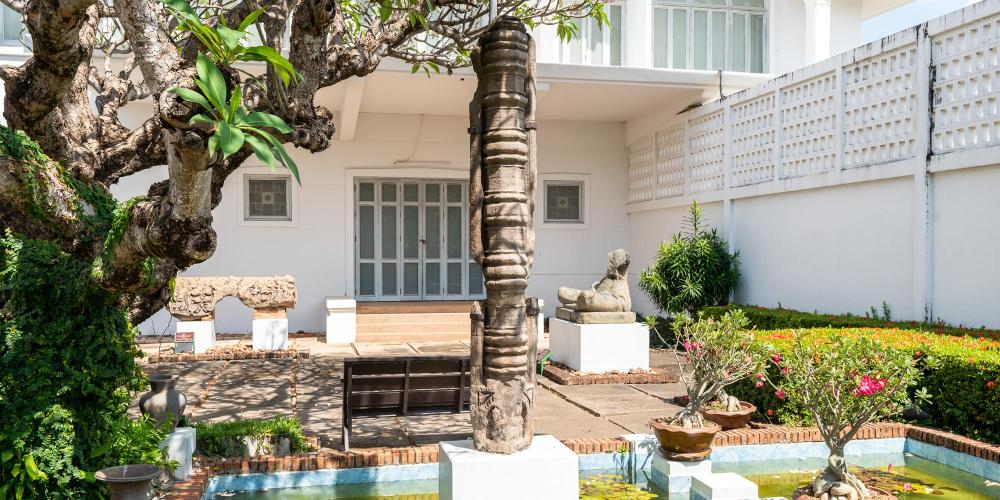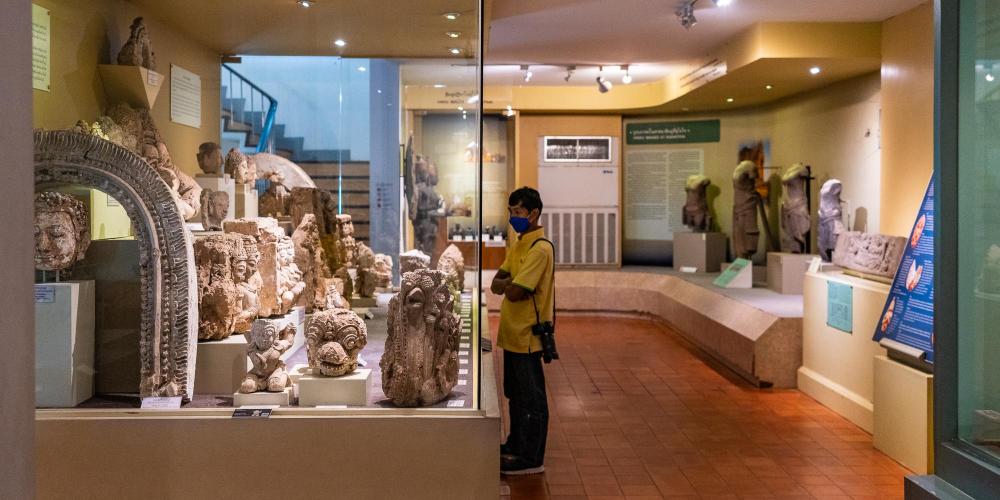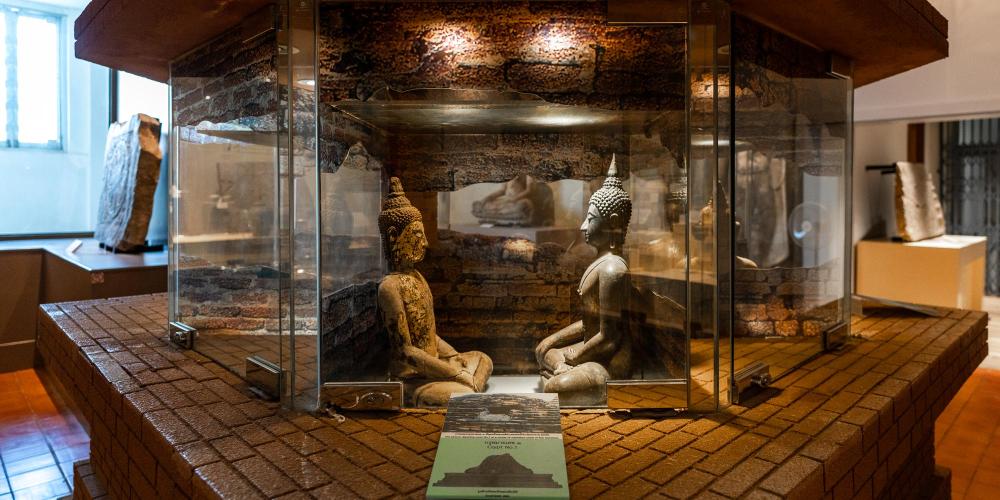Ramkhamhaeng National Museum

Located next to the entrance to the Sukhothai Historical Park, the Ramkhamhaeng National Museum contains some of the most important artefacts found in the old city, showing the development of the kingdom and the opulence of its peak.
The exhibits include bronze kettledrums found in different parts of Southeast Asia that demonstrate contact Sukhothai had with the region from as early as 500 BC. Artworks with Hindu influences and images of Shiva and Vishnu show how religious culture evolved over the centuries.
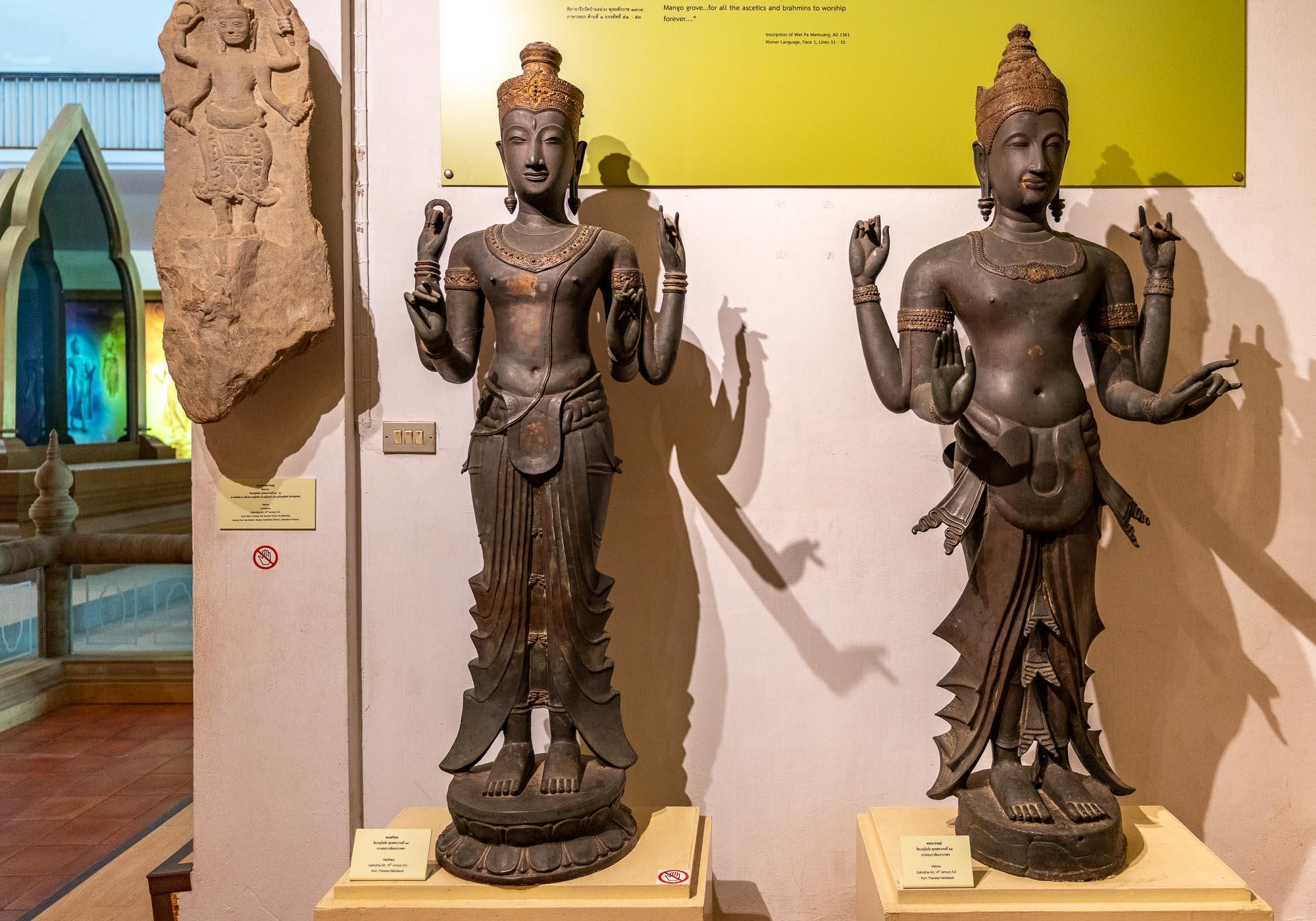
Some of the most important items of the collection are statues of Buddha that showcase the Sukhothai style of art that emerged here from the 13th century, depicting Buddha with a flame-like halo, an oval face, and a slight smile. These once covered the temples of the historical park, but many have been damaged or removed.
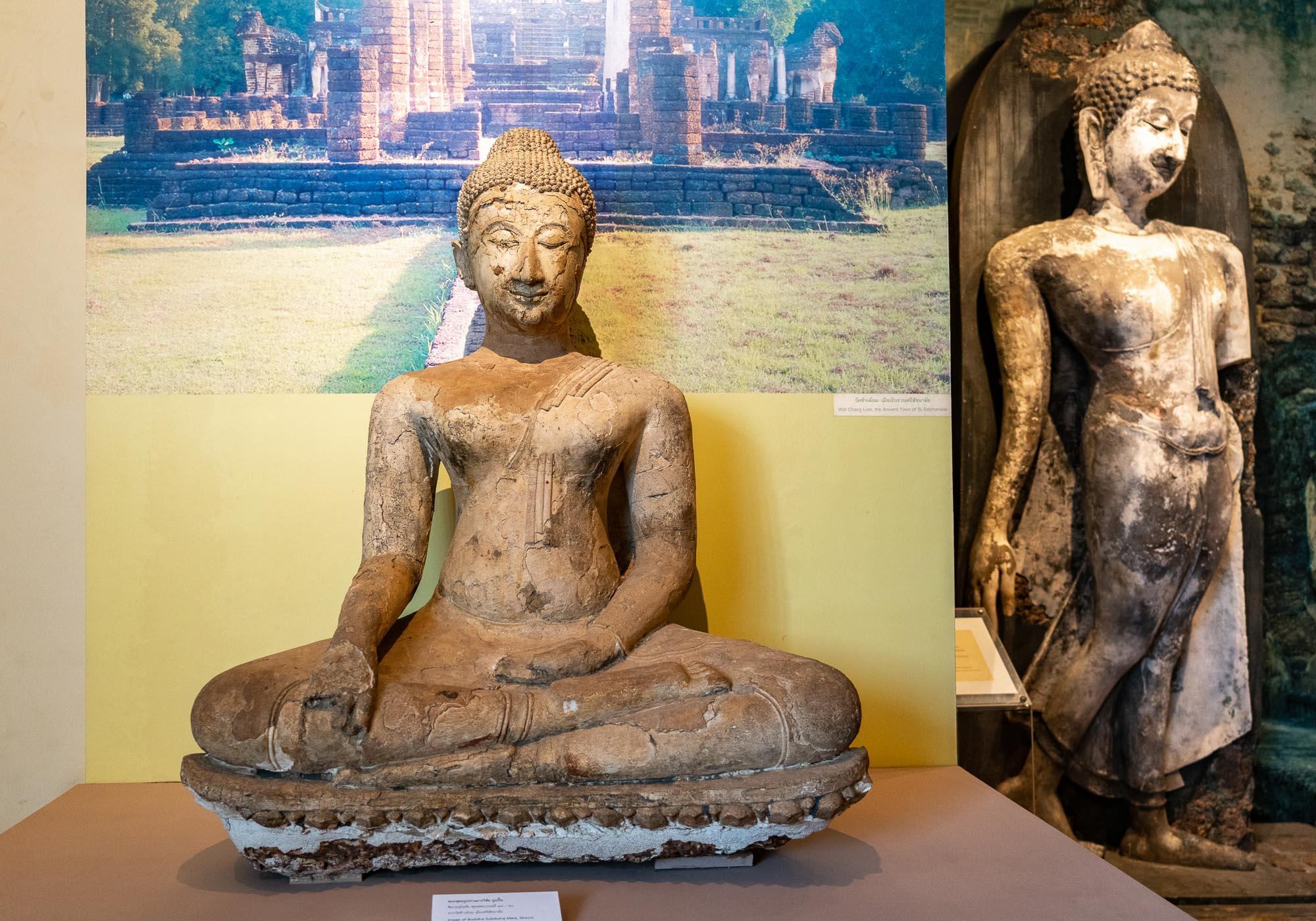
The Ramkhamhaeng National Museum also has a series of exhibitions explaining some of the most important aspects of Sukhothai's history and culture, including a model of the inscription by King Ramkhamhaeng that is said to be the earliest surviving example of the Thai script. A narrow staircase with images on the wall depicts the pathway that leads to the head of the Buddha at Wat Si Chum.
